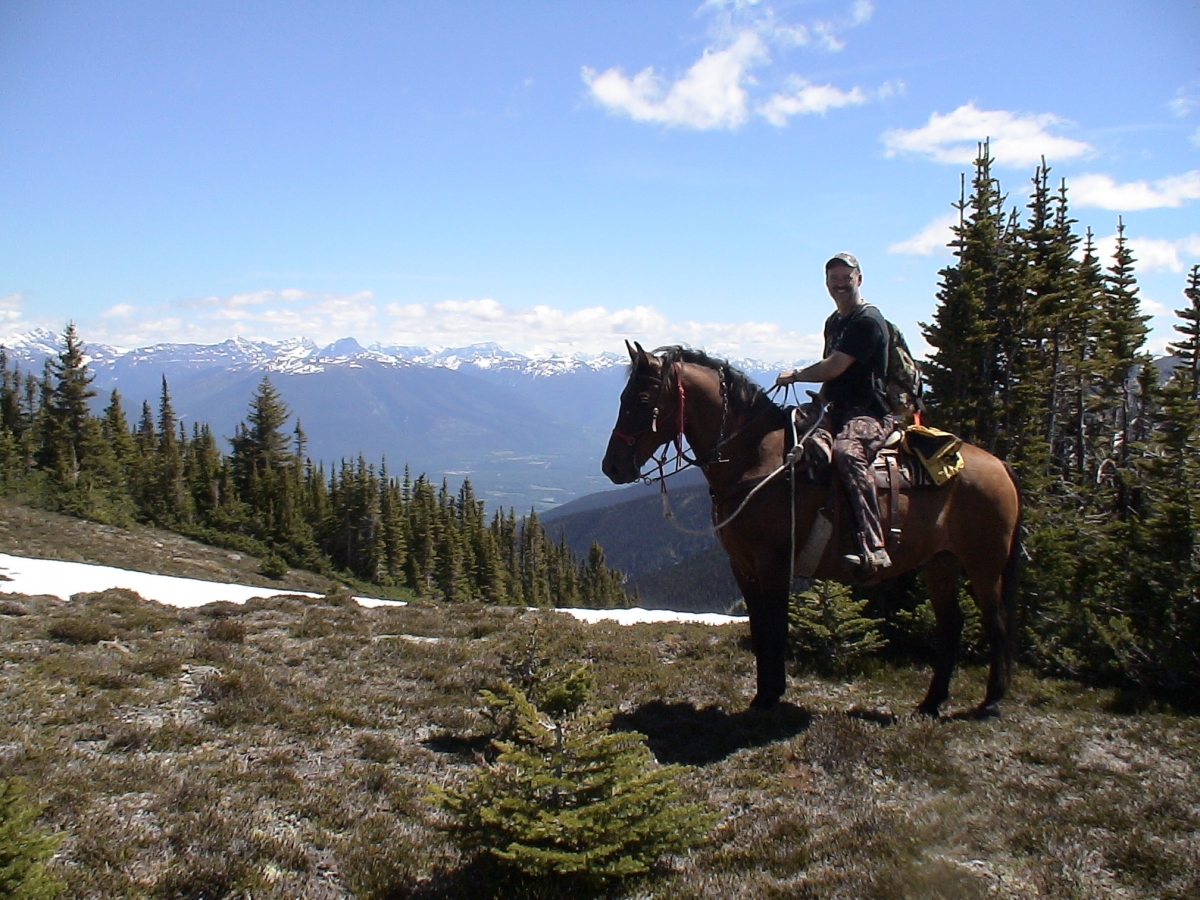So, you want to know how to choose the right horseback riding trail? Well, you’ve come to the right place! Choosing the perfect trail for you and your trusty steed can make all the difference in your riding experience. But with so many options out there, it can be overwhelming to know where to start. Don’t worry though, I’ve got you covered.
In this article, we’re going to delve into the ins and outs of choosing the right horseback riding trail. We’ll discuss factors like difficulty level, scenery, trail conditions, and even safety considerations. I’ll share some tips and tricks that will help you narrow down your options and find the trail that’s perfect for you and your horse. So, if you’re ready to hit the trails, keep reading because you’re going to learn a whole lot more about how to choose the right horseback riding trail.
How to Choose the Right Horseback Riding Trail
When it comes to horseback riding, one of the most important decisions you’ll have to make is choosing the right trail. Whether you’re a beginner or an advanced rider, there are various factors to consider that will ensure a safe and enjoyable experience. In this article, we will explore the benefits of horseback riding, different types of trails, considerations for choosing a trail, safety tips, preparation, essential gear, best practices, tips for beginners and advanced riders, guidelines for horse health and care, seasonal considerations, and how to find the best horseback riding trails in your area. So let’s saddle up and get started!
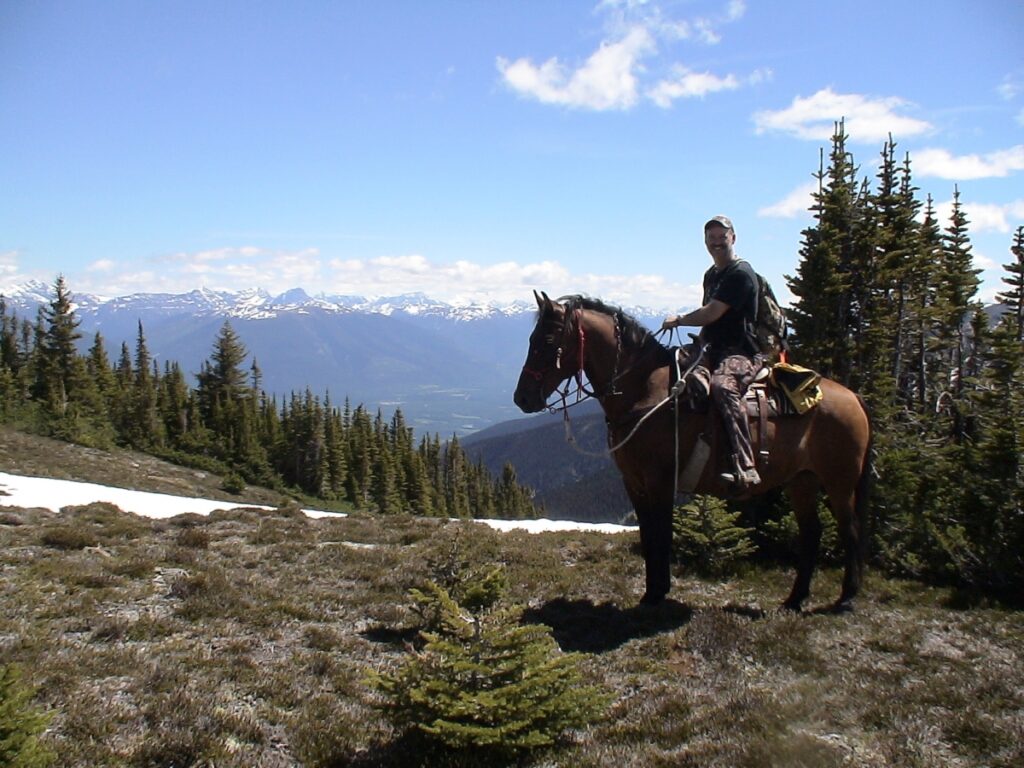
Benefits of Horseback Riding
Before we delve into the specifics of choosing a trail, let’s first discuss the incredible benefits of horseback riding.
Improved Physical Fitness
Horseback riding is an excellent way to improve your physical fitness. It works your core muscles, including your abs, back, and inner thighs, as you use them to balance and control the horse. Additionally, it helps to enhance your cardiovascular endurance and can even help with weight loss. So not only will you have fun while riding, but you’ll also be getting a great workout!
Mental Health and Stress Relief
In today’s fast-paced world, finding ways to relieve stress and improve mental health is crucial. Horseback riding offers a peaceful escape from the everyday pressures of life. The rhythmic motion of riding has a calming effect, helping to reduce anxiety and promote relaxation. Being around horses also creates a sense of connection and mindfulness, allowing you to be present in the moment and forget about your worries.
Connection with Nature
One of the most beautiful aspects of horseback riding is the opportunity it provides to connect with nature. Riding through picturesque trails allows you to immerse yourself in the beauty of the outdoors. You can enjoy the sights and sounds of the surrounding wildlife, breathe in the fresh air, and appreciate the scenery. This connection with nature can be incredibly therapeutic and rejuvenating.
Different Types of Horseback Riding Trails
Now that we’ve explored the benefits of horseback riding, let’s take a look at the different types of trails you can choose from.
Mountainous Trails
If you’re looking for a thrilling and adventurous experience, mountainous trails are the way to go. These trails offer breathtaking views of valleys, peaks, and forests. Riding through rugged terrains and steep slopes will test your skills as a rider, but the rewards are well worth it. Just be sure to choose a trail that matches your experience level and is suitable for your horse.
Beach Trails
For those who prefer a more relaxed and leisurely ride, beach trails are a perfect choice. Feeling the sand beneath your horse’s hooves and listening to the sound of crashing waves can create a truly magical experience. Beach trails often offer wide-open spaces, allowing you to enjoy the freedom and tranquility of the shoreline. Be sure to check for any restrictions or designated areas for horseback riding on beaches.
Woodland Trails
Woodland trails offer a serene and enchanting setting for horseback riding. Riding through forests filled with tall trees, dappled sunlight, and winding paths can make you feel like you’re in a fairytale. These trails provide plenty of shade during hot summer days and offer a peaceful escape from the bustling world. Just make sure to be cautious of low branches and obstacles on the trail.
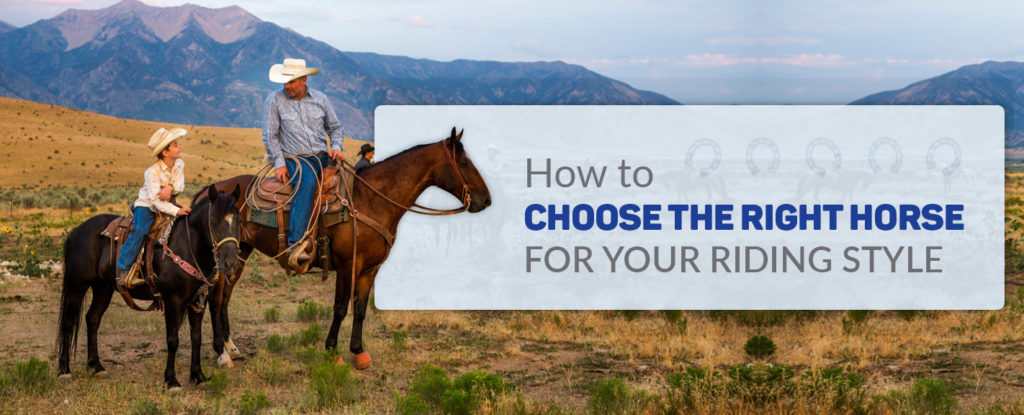
Considerations for Choosing a Trail
Now that you have an idea of the different types of trails available, it’s important to consider a few factors that will help you choose the right one for your riding experience.
Level of Experience
One of the key considerations when choosing a trail is your level of experience as a rider. Whether you’re a beginner or an advanced rider, selecting a trail that matches your skill level is crucial for your safety and enjoyment. Beginners should choose well-marked and beginner-friendly trails with minimal obstacles, while advanced riders can opt for more challenging trails that test their skills and provide an adrenaline rush.
Trail Difficulty
Apart from considering your own experience level, it’s essential to assess the difficulty level of the trail you’re considering. Trails can vary in terms of terrain, steepness, and obstacles. Some trails may be more suitable for leisurely rides, while others may require advanced navigation skills. Make sure to research the trail difficulty and read reviews or seek recommendations from experienced riders before embarking on a trail.
Trail Length
Trail length is another important factor to consider, especially if you’re planning a day trip or are limited on time. Depending on your endurance and the fitness level of your horse, you’ll want to choose a trail that matches your comfort level and time constraints. Shorter trails can be ideal for beginners or riders who prefer a quick ride, while longer trails offer more opportunities to explore and enjoy the scenery.
Safety Tips for Horseback Riding Trails
Ensuring your safety and the safety of your horse should always be a top priority while horseback riding. Here are some essential safety tips to follow when hitting the trails.
Wear a Helmet
Wearing a helmet is crucial for protecting your head in case of a fall or accident. Make sure to wear a properly fitted helmet that is specifically designed for equestrian activities. Remember, it’s always better to be safe than sorry.
Ride with an Experienced Guide
If you’re new to horseback riding or exploring unfamiliar trails, it’s highly recommended to ride with an experienced guide. A guide can provide valuable knowledge about the trail, help navigate challenging sections, and ensure your safety throughout the ride. They can also enhance your experience by sharing interesting facts about the area and its wildlife.
Buddy System
Whenever possible, ride with a buddy or a group of fellow riders. Riding in a group increases safety as there are more eyes and ears to detect any potential hazards or emergencies. Additionally, riding with others can make the experience more enjoyable and provide opportunities for social interaction.
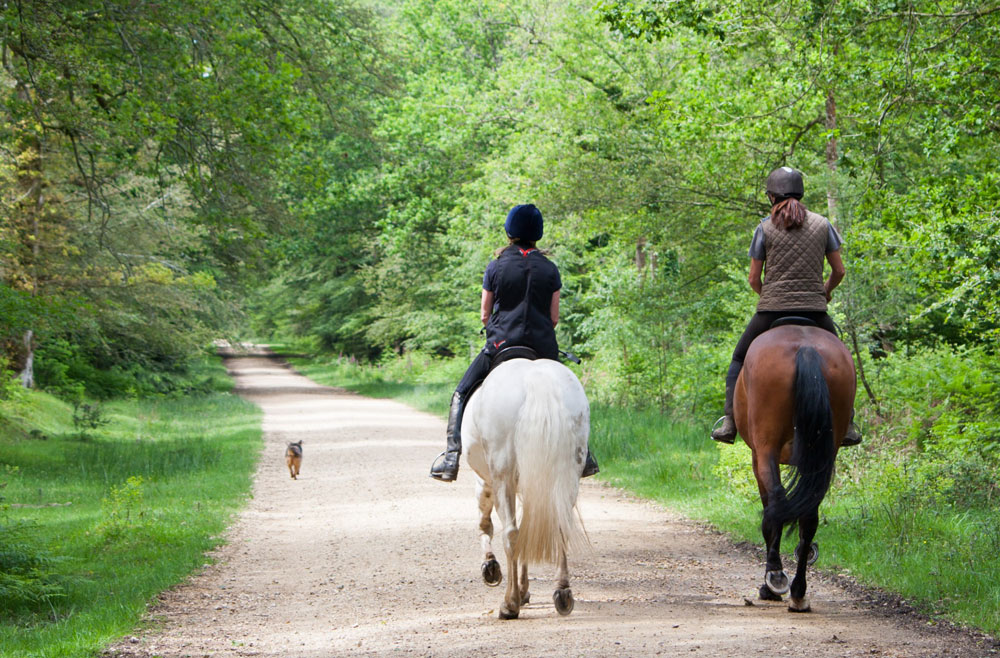
Preparing Yourself for a Trail Ride
To ensure a comfortable and enjoyable trail ride, proper preparation is key. Here are some important aspects to consider before hitting the trails.
Proper Attire
Wearing appropriate attire is essential for both your comfort and safety while horseback riding. Opt for fitted and comfortable riding pants or jodhpurs that allow ease of movement. Wear a long-sleeved shirt to protect your arms from scratches and the sun. Don’t forget to wear sturdy riding boots with a slight heel to prevent your feet from slipping through the stirrups. And of course, never forget to wear your helmet!
Hydration and Snacks
Staying hydrated is crucial during any physical activity, including horseback riding. Make sure to bring an adequate supply of water for yourself and your horse, especially during hot summer months. Additionally, pack some energy-boosting snacks like granola bars or fruits to keep you fueled throughout the ride.
Stretching Exercises
Before mounting your horse, it’s important to warm up your body through stretching exercises. This will help prevent muscle strains or cramps and improve your flexibility while riding. Focus on stretching your calves, thighs, and lower back. You can also perform some simple leg swings and shoulder rolls to loosen up your joints.
Essential Gear for Horseback Riding Trails
Having the right gear is essential for both your safety and the comfort of your horse on the trail. Here are some essential items to have before heading out.
Saddle and Bridle
Investing in a well-fitted and comfortable saddle and bridle is crucial for a successful trail ride. The saddle should be suitable for the type of riding you’ll be doing, whether it’s Western or English. Ensure that the saddle fits your horse properly and allows freedom of movement. The bridle should also be properly fitted and include a bit that suits your horse’s needs and preferences.
Riding Boots
Choosing the right riding boots is important for both comfort and safety. Look for boots made specifically for horseback riding, as they are designed with features like a slight heel and good grip. Investing in a pair of boots with ankle support will also help prevent injuries while riding.
Safety Equipment
In addition to wearing a helmet, there are other safety equipment items that you should consider bringing with you on the trail. These may include reflective gear or clothing for enhanced visibility, especially if you’ll be riding during low-light conditions. Additionally, carrying a basic first aid kit for both you and your horse is essential in case of minor injuries or accidents.
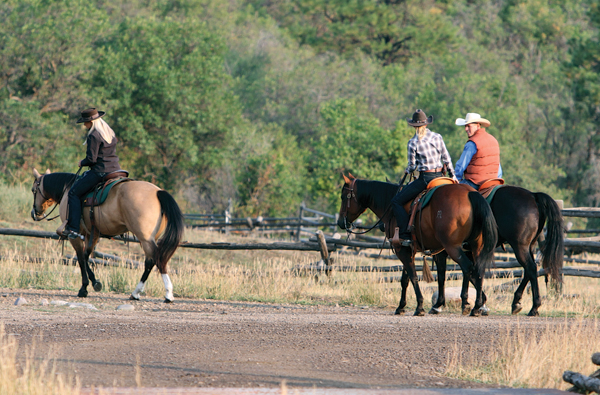
Best Practices for Horseback Riding on Trails
As responsible riders, it’s important to follow some best practices while on the trails. Here are a few guidelines to keep in mind.
Follow Trail Etiquette
Respecting trail etiquette is crucial for maintaining harmony and safety on the trails. Always yield to hikers and bikers, and give them plenty of space when passing. Keep a moderate pace to avoid startling other trail users or wildlife. And be sure to clean up after your horse, disposing of manure in designated areas.
Respect Wildlife and Environment
When riding on trails, it’s important to be mindful of the wildlife and environment around you. Avoid disturbing or approaching wild animals, as this can cause stress or potentially dangerous situations. Stay on designated paths to minimize your impact on the ecosystem, and never litter or leave any garbage behind.
Stay on Designated Paths
To protect the natural habitats and prevent erosion, it’s important to stay on designated paths and avoid creating new trails. Venturing off designated paths can harm delicate ecosystems and disrupt wildlife habitats. Stick to well-marked trails to ensure a positive and sustainable horseback riding experience for future riders.
Trail Riding for Beginners
If you’re new to horseback riding, choosing the right trail and horse is crucial for building confidence and enjoyment. Here are some considerations for beginners.
Choosing the Right Horse
For beginners, it’s important to choose a horse that matches your experience level. Look for a calm and well-trained horse that is patient and forgiving. Horses with a steady temperament and experience on trails will help build your confidence and make your first rides more enjoyable.
Basic Riding Techniques
Before hitting the trails, familiarize yourself with basic riding techniques and commands. Learn how to steer your horse using the reins and communicate through your seat and legs. Practice mounting and dismounting, stopping, starting, and turning in an enclosed area before venturing out onto the trails.
Building Confidence
Building confidence as a beginner rider takes time and patience. Start with shorter and easier trails to gradually build your comfort level. Take lessons from a qualified instructor to improve your riding skills and gain the knowledge necessary for safe trail riding. And most importantly, trust yourself and your horse. Believe in your abilities, and remember that each ride is an opportunity for growth and enjoyment.

Trail Riding for Advanced Riders
Experienced riders often seek challenges and want to refine their skills on the trails. Here are some considerations for advanced riders.
Trail Challenges and Obstacles
To keep things interesting, advanced riders often seek trails with more challenges and obstacles. Look for trails with steep inclines, water crossings, fallen trees, or rocky terrain to test your riding abilities. Make sure to be fully prepared and take the necessary precautions to navigate these challenges safely.
Advanced Riding Techniques
Advanced riders should continually work on their riding techniques to enhance their skills on the trail. This may include refining your seat and body position, perfecting your aids and cues, and mastering advanced maneuvers like lateral movements and collection. Regular lessons or clinics can help you further develop your riding abilities and take your trail riding to the next level.
Trail Navigation
Advanced riders often venture into unfamiliar territories or plan longer rides that require navigation skills. Familiarize yourself with maps, compasses, and GPS devices to ensure you stay on track. It’s also helpful to study topographic maps and understand how to read terrain features that can aid in navigation.
Guidelines for Horse Health and Care on Trails
Taking care of your horse’s health and well-being is crucial while on the trails. Here are some guidelines to keep in mind.
Proper Hoof Care
Regular hoof care is essential to prevent discomfort or hoof-related injuries while riding. Make sure your horse is regularly trimmed or shod by a professional farrier. Keep an eye out for any signs of lameness or hoof abnormalities during and after rides, and consult with an equine veterinarian if you have any concerns.
Trail Stress Management
Horses, like humans, can experience stress and anxiety in unfamiliar environments or challenging trail conditions. Practice desensitization exercises at home to prepare your horse for potential stressors on the trail, such as water crossings, bridges, or wildlife encounters. Gradually introduce new stimuli and reward your horse for calm behavior.
First Aid for Horses
Having a basic understanding of equine first aid is essential in case of any injuries or emergencies on the trail. Carry a small first aid kit specifically designed for horses, including items such as bandages, antiseptic solution, a thermometer, and wound dressings. Familiarize yourself with basic first aid techniques for horses and know when to seek veterinary assistance.
Seasonal Considerations for Trail Riding
Seasonal changes can significantly impact trail conditions and horseback riding experiences. Here are some considerations for different seasons.
Summer Heat Precautions
During the hot summer months, it’s important to take precautions to prevent heat stress in both you and your horse. Ride during cooler times of the day and provide frequent breaks in shaded areas for your horse to rest and rehydrate. Apply sunscreen to protect your skin from the sun’s harmful rays, and wear lightweight, breathable clothing to stay cool.
Winter Riding Essentials
Winter riding requires additional preparations to keep you and your horse safe and comfortable. Ensure your horse is adequately blanketed to prevent chilling, and use layers of clothing to protect yourself from the cold. Check trail conditions before heading out and be cautious of icy or slippery terrain. Consider using hoof boots or shoes with studs for better traction.
Spring and Fall Trail Conditions
Spring and fall can bring unpredictable weather and rapidly changing trail conditions. Be prepared for muddy or wet trails during the spring and fallen leaves or slippery surfaces during the fall. Adjust your riding style accordingly and be cautious of any hazards hidden beneath the changing terrain. Stay updated on weather forecasts and trail closures in case of severe weather conditions.
Finding the Best Horseback Riding Trails in Your Area
Now that you have a better understanding of how to choose the right horseback riding trail, let’s explore some ways to find the best trails in your area.
Researching Online Resources
Online resources such as horseback riding websites, trail review platforms, and local tourism websites can provide valuable information about trails in your area. Read reviews from other riders to gain insights into the quality, difficulty level, and scenery of various trails. Some websites even provide detailed trail maps and directions to help you plan your ride.
Asking Local Equestrians
Reach out to local equestrians or equestrian groups in your area for recommendations on the best horseback riding trails. They can provide valuable insights based on their personal experiences and help you discover hidden gems that may not be as well-known. Joining equestrian forums or Facebook groups can also connect you with knowledgeable individuals who are passionate about horseback riding.
Joining Riding Clubs
Consider joining a local riding club or association dedicated to horseback riding. These clubs often organize group rides, clinics, or trail events, providing opportunities to explore new trails and connect with like-minded riders. Membership in these clubs may also grant you access to private trails or exclusive riding areas not accessible to the general public.
Exploring Horseback Riding Trails Around the World
If you’re looking for more adventure and a chance to explore breathtaking trails around the world, here are some options to consider.
Famous Trails and Destinations
There are several famous horseback riding trails and destinations around the world renowned for their beauty and unique experiences. Examples include the Banff National Park in Canada, where you can ride through stunning mountainous landscapes, or the Camargue region in France, famous for its white horses and vast wetlands. Research these destinations to find one that matches your riding preferences and bucket list.
International Riding Tours
If you’re looking for a more guided and organized experience, you can consider joining an international riding tour. These tours often span several days or weeks and take you through a variety of trails and landscapes. Whether it’s riding through the Mongolian steppe, exploring the African savannah, or galloping on the beaches of Costa Rica, these tours offer unforgettable experiences for horseback riding enthusiasts.
Cultural Experiences
Combining horseback riding with cultural experiences can offer a truly immersive and memorable adventure. Consider destinations like Argentina, where you can ride with gauchos and experience the traditional way of life on a ranch. Or explore the Native American trails in the United States and learn about their rich history and connection with horses. These cultural experiences can deepen your appreciation for horseback riding while providing a unique perspective on different traditions and lifestyles.
Conclusion
Choosing the right horseback riding trail is essential for a fulfilling and safe riding experience. By considering factors such as your experience level, trail difficulty, and trail length, you can find the perfect trail to match your preferences. Following safety tips, proper preparation, and best practices will further enhance your enjoyment on the trails. Remember to respect the environment, take care of your horse’s health, and explore both local and international destinations to broaden your horizons as a horseback rider. So saddle up, explore the trails, and enjoy the incredible journey that horseback riding offers!
